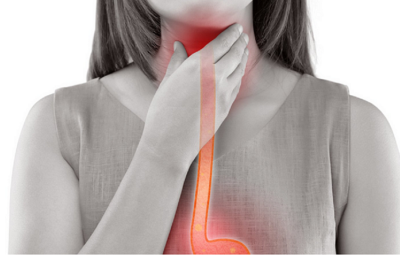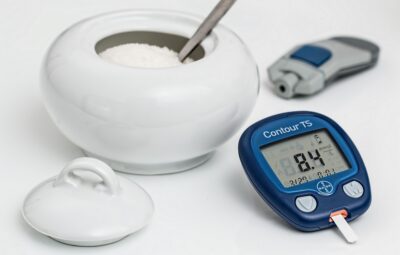There is common talk of high cholesterol levels causing heart issues in males.
But is it a problem for women, too?
Many incorrectly believe that women are not often afflicted with high cholesterol levels like men are.
They may adopt the attitude that they do not need to measure their cholesterol levels, believing that nothing is wrong.
Roughly equal numbers of males and females perish each year resulting from heart-related health issues, according to the U.S. Centers for Disease Control and Prevention.
Women are the most common victims of death from heart disease, and an alarming number of females remain unaware of this worrying statistic.
What is the connection between cholesterol and heart disease in women?
What are the recommended cholesterol levels for women, and how can they maintain good health?
Continue reading to discover the solutions to these queries and additional information.
What Is Cholesterol?
Cholesterol is a type of fat that is present in all parts of the body and in the bloodstream. The cell wall has a vital role to play in the regeneration of tissues. Producing sex hormones and other steroids is also necessary.
Thus, your body needs cholesterol to work properly. When cholesterol levels are too high, it can accumulate on the walls of your arteries.
Putting inflammation and free radicals together will lead to an obstruction in the arteries. This is known as atherosclerosis.
The problem with cholesterol is not fat itself. The kind of fat we ingest and the amount consumed daily are both important factors. Excess fat causes atherosclerosis, as described above. This can result in conditions such as heart disease, heart attack, and stroke.
Types of Cholesterol
LDL (low-density lipoprotein) cholesterol
This is the famous “bad” cholesterol. It carries cholesterol from the liver to the tissues.
Extra cholesterol accumulates in the walls of your arteries, resulting in atherosclerosis. Free radicals oxidize the LDL cholesterol and set off a detailed chain of events that leads to the development of plaques in blood vessels.
HDL (high-density lipoproteins) cholesterol
This is known popularly as “good” cholesterol. It can assist in reducing unnecessary cholesterol from your blood vessels and other areas of the body.
The reason why the desirable level of HDL cholesterol has a bottom threshold but not a top one. So, you wish for this type of cholesterol to stay fairly high.
Other Types of Body Fat
In addition to HDL and LDL cholesterol, there are other types of lipoproteins present in the body. An example of this is very low-density lipoprotein, shortened to VLDL. We also have chylomicrons and other carrier particles.
In sum, a total cholesterol reading encompasses all of these different kinds of cholesterol. This is why medical practitioners calculate the overall cholesterol levels along with the HDL and LDL levels so they understand the whole analysis.
Normal Cholesterol Levels for Women by Age
The typical levels of total, LDL, and HDL cholesterol for women are provided below.
Total cholesterol
As you can see, the range is slightly higher in women after 20 years:
- The ideal total cholesterol level should stay below 200 milligrams per deciliter (mg/dL). But if you are younger than 20 years, the normal range is below 170 mg/dL.
- If your total cholesterol is 200 to 239 mg/dL, it’s considered borderline high. In women younger than 20 years, borderline levels stay in the range of 170 to 199 mg/dL.
- A level of 240 mg/dL and above is considered high. If you are younger than 20, 200 mg/dL is already high.
LDL cholesterol
This is what LDL cholesterol levels for women look like. In this case, the normal ranges are higher in some cases and lower in others:
- The ideal LDL cholesterol levels should stay lower than 100 mg/dL. But if you are younger than 20 years, the highest LDL cholesterol level should be 110 mg/dL.
- If your LDL cholesterol is 100 to 159 mg/dL, it’s considered borderline. In women younger than 20 years, it corresponds to the range of 110 to 129 mg/dL.
- A level of 160 mg/dL and above is considered high in women. But if you’re younger than 20, the upper threshold is 130 mg/dL.
HDL cholesterol
The normal cholesterol range is different for HDL.
These are the normal ranges for women:
- In women younger than 20 years, HDL cholesterol is normal when it stays above 45 mg/dL.
- If you are 20 years or older, HDL cholesterol levels should be a minimum of 50 mg/dL.
What Are the Warning Signs of High Cholesterol?
High cholesterol (hypercholesterolemia) typically does not cause any signs or symptoms, so in order to find out the fat levels in your blood you will need to get your cholesterol checked on a regular basis.
The only method to guarantee that your cholesterol levels remain low is to get a blood cholesterol test done. You can also opt to do some cholesterol tests at home. However, they are not accurate.
Instead of warning signs, high cholesterol levels have complications. The condition only reveals itself after it has advanced and begins to have an effect on your organs.
Complications of High Cholesterol
It has been stated that having high cholesterol is an important risk factor for heart disease. A major consequence of elevated cholesterol levels is heart disease. This encompasses stroke, coronary artery disease, and different types of peripheral vascular diseases.
But that is just the beginning. High cholesterol is associated with many other chronic ailments:
Coronary heart disease
It includes heart attacks and milder problems called angina. In these situations, the arteries in the heart constrict, and atherosclerosis is a typical source.
Diabetes
There is a strong link between cholesterol and diabetes. It can be asserted that, for those with type 2 diabetes, the risks associated with having high cholesterol levels are even greater.
Stroke
It is also known as cerebrovascular disease. Cholesterol buildup plaques also affect brain blood vessels. These plaques reduce blood flow to the brain. When the circulation of blood halts completely, a stroke occurs.
Peripheral vascular disease
Atherosclerosis, which may also be known as peripheral artery disease or “circulation problems”, is an illness where the arteries throughout the body become narrowed and are unable to provide enough oxygen. The most typical signs and symptoms are muscular spasms and a pins-and-needles sensation in the arms and legs.
High blood pressure
High cholesterol levels trigger inflammation, thus constricting blood vessels. When arteries are narrow, the blood pressure level increases. This is why it is common for individuals with high cholesterol to take medicines to regulate blood pressure.
Erectile dysfunction
Men can also suffer from impotence when there is a buildup of atherosclerosis (hardening of the arteries) within the tissue of the penis.
What Affects Cholesterol Levels?
Various elements may impact cholesterol levels. Some risk factors are within your control, while others are not:
- Genetics: These factors include familial hypercholesterolemia and a family history of heart disease.
- Sex: Males often have higher levels of LDL. After menopause, a woman’s LDL levels can also increase.
- Weight: People who are overweight or obese are at increased risk of having high cholesterol.
- Sedentary lifestyle: Lack of physical activity can increase the risk of being overweight and obese and, in turn, increase cholesterol levels.
- Diet: Overall, diet quality can affect cholesterol in a negative way, including eating too many saturated and trans fats and not enough fiber.
- Age: Your body’s ability to clear cholesterol can be impacted as you age.
- Race and ethnicity: There are different rates of high cholesterol based on race/ethnicity and sex, with the highest rates among males in Hispanics and the highest rates among females in non-Hispanic Whites.
- Smoking: Smoking can increase your bad cholesterol and lower your good cholesterol.
- Other medical conditions: Having a previous history of high cholesterol, heart disease, or diabetes can increase your risk of developing high cholesterol.
How to Lower Cholesterol
People of any age can improve their health by participating in frequent physical activity, preserving a healthy weight, and consuming a nutritious diet that has lots of fiber. A sedentary lifestyle has been associated with high cholesterol.
Lifestyle Changes
It has been indicated by research that consuming a nutritious, beneficial to-heart diet can decrease the likelihood of having heart disease, suffering from a stroke, and dying. Such a diet should include a variety of plant-based foods, including fruits, vegetables, nuts, seeds, legumes, and whole grains.
Fiber, which is an indigestible type of carbohydrate, is present in high amounts in fruits and vegetables. Fiber has a similar action to a sponge since it binds to cholesterol and encourages the body to get rid of it.
The amount of fruits and vegetables that should be eaten daily varies between children and adults. Children aged nine and above ought to consume around one and a half to two cups of fruit and two and a half to three cups of vegetables on a daily basis.
This can be too much to handle for some children and their parents, particularly if your youngster prefers picky eating. It is never too late to begin consuming a healthier diet. Making small changes can yield a big impact. Start off by including one portion of either fruit or vegetables in a child’s diet each day.
Decreasing the amount of saturated fat and trans fat that you eat is important because they are solid fats that are known to raise cholesterol levels, and they can also contribute to the blockage of arteries when consumed in too large of amounts. The American Heart Association proposes that people over the age of 18 limit their consumption of saturated fat to a total of 6% of their caloric intake.
If you consume 2,000 calories a day, then you should keep your consumption of saturated fat below 13 grams. A single tablespoon of butter contains approximately 7 grams of saturated fat, more than the suggested daily allowance.
Foods containing a lot of saturated and trans fat are things such as fatty meats, bacon, sausage, meat skins, fried foods, whole-fat dairy items, butter, cream, pastries, and fast food. You can still consume these foods on occasion. Cutting back on your food intake can have a huge effect on your cholesterol levels.
Kids don’t have to keep track of the amount of saturated fat they consume. Lessening consumption of processed food items and making minor modifications can have a beneficial effect on cholesterol amounts.
For instance, buying skim milk, limiting red meat to two times a week, and including more lean protein sources like poultry, turkey, and fish can help curb saturated and trans-fat consumption.
Incorporate healthy fats into your diet: Seeds, such as flax and chia, and fatty seafood, for example, salmon, are excellent sources of omega-3 fatty acids, which may improve your cholesterol by boosting your HDL levels. Think about eating fish twice a week, and for added fiber and healthy fat, try putting ground flax, nuts, or seeds in your oatmeal, pancakes, or smoothies.
Preparing food with reduced-fat techniques can assist in decreasing cholesterol levels. Consider replacing butter with either olive oil or avocado oil. Try to use baking, broiling, steaming, poaching, or grilling as your cooking method more often and reduce the amount of deep frying. Get your children involved in the cooking process, too.
Engage in enjoyable activities that keep you active: Doing so will have a positive impact on your overall well-being, as well as your cardiovascular health. Exercising can lead to a healthier weight and better cholesterol levels. Kids in the schooling system should engage in a minimum of an hour’s worth of physical activity per day.
Young children should be encouraged to stay active throughout their day, while adults should strive to get at least 150 minutes of moderate-to-intense aerobic exercise and two strength-training sessions per week. It can be a lot to take on, but you can still gain the advantages of physical fitness by breaking your workouts into 10-minute chunks.
The most effective way to begin a physical fitness program is to find an activity that you take pleasure in. When possible, involve the entire family in activities such as biking, walking, or enjoying a game of basketball, kickball, tag, or other family-friendly pursuits.
If you have a pre-existing medical issue and don’t normally exercise, you should talk to your doctor prior to initiating an exercise routine.
Stop smoking: Cigarettes affect cholesterol levels by increasing low-density lipoprotein and decreasing high-density lipoprotein. The American Heart Association suggests ceasing cigarette consumption and staying away from secondhand smoke to raise cholesterol levels.
Keep your weight in check: Having too large of a midsection is linked to a higher risk of developing heart conditions and an increase of bad cholesterol (LDL). Excess weight has also been associated with low HDL. Reducing body weight by approximately 5-10 percent has been demonstrated to raise lipids.
In general, it is not necessary for children to slim down if they are within a normal weight range. It is generally beneficial for children, depending on their age and health status, to remain at a healthy weight as they continue to grow.
Medications
If adjusting your lifestyle does not have a positive effect on your cholesterol levels, you may need to take medications. The choice to begin treatment is contingent upon your previous medical record, age, weight, and any other potential risks for heart problems, for example, hypertension and diabetes.
There are many different types of medications for cholesterol. Your physician will help you find the right fit.
Drugs may be necessary for children if they have an inherited medical condition known as familial hypercholesterolemia. The FDA has given the okay for some types of statins to be used from the age of 8, but you should still talk with your doctor about it.
Conclusion
The cholesterol levels of females vary in accordance with their age. In general, it is recommended that LDL levels remain low. Ideally, they should be under 170 mg/dL. A higher HDL count than 50 mg/dL is desirable.
The purpose of cholesterol measurements is revealed by the fact that LDL is thought to be poor cholesterol, whereas HDL is seen as good cholesterol.
Your blood cholesterol level can increase at any time without any warning signs. But it raises your cardiovascular disease risk.
It is significant to monitor the lipid profile in order to stop cholesterol from increasing in the bloodstream. Monitoring your blood lipids can lengthen your life, as well as avoid a number of issues and illnesses.







